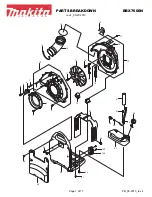
Cryobiological Storage Vessel
1-1
Thermo Scientific
Please Read
Section 1
Safety Information
This manual contains important operating and safety information.
The user must carefully read and understand the contents of this manual
prior to the use of this equipment.
Your Thermo Scientific cryogenic vessel has been designed with function,
reliability, and safety in mind. It is the user’s responsibility to install it in
conformance with local electrical codes. For safe operation, pay attention
to the warnings and cautions throughout the manual.
All cryopreservation vessels, regardless of who manufactures them, use a
vacuum to provide for the super insulative properties needed to keep
nitrogen in a liquid form. They are very similar, in fact, to the thermos
vessels you may have used to store coffee, soup or milk.
Remember how fragile they were? Since no vacuum is perfect or will last
forever, we suggest that you monitor the consumption of liquid nitrogen
used by your vessel on a regular basis, i.e. every 1-2 days. By monitoring,
you may be able to anticipate subtle changes in consumption and possibly
react to problems before they arise. You may opt to use a level monitor for
this purpose.
Also, if your samples are super-critical, one-of-a-kind, or irreplaceable,
consider allocating your samples into 2 separate vessels.
Remember the old adage about placing all your eggs into one basket…
Warnings
• This unit is intended to be used by trained personnel in a
well-ventilated environment.
• Liquid nitrogen is extremely cold; it boils at -196°C.
• Follow all necessary precautions and warnings relevant to applicable
hazards such as frostbite, contact burn, asphyxiation, etc., in cryogenic
areas.









































